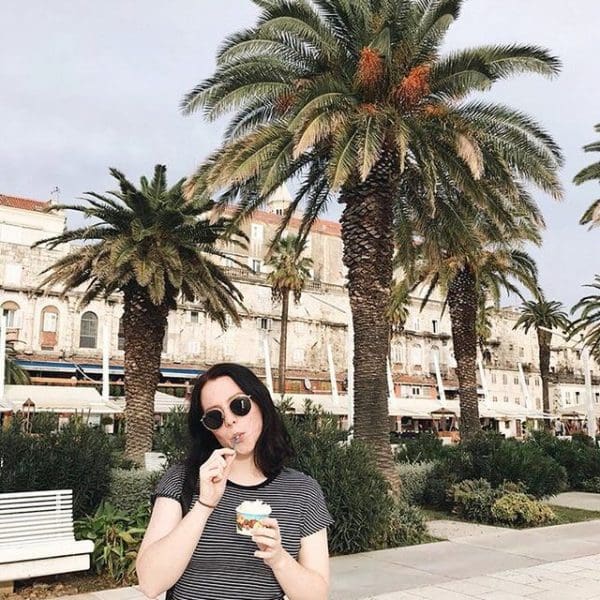A dazzling port and glamorous holiday destination, Split is a great combination of old-world charm and beach fun.
Even though Split is a port for many Croatian islands, sitting elegantly between the Adriatic and the mountains, the country’s second city has two Unesco World Heritage sites within its walls, a marble waterfront walkway and a buzzing atmosphere around its bars and pubs.
Location: Split, Dalmatia, Croatia
Language: Croatian
Population of city: 178,102
Nearest airport: Split Airport
Main train/bus station(s): Zeljeznicki Kolodvor Split/Autobusni Kolodvor Split
Best time to visit? Summer months (shoulder seasons May-June and September-October are less busy but still warm)
Budget level? ££
Best for: Beaches, Old Town, Nightlife, Excursions/day trips
Plan at least 2 nights in Split to make the most of its super chilled out atmosphere. Add more if you want to visit neighbouring islands like Hvar or Brac, or head inland to Krka National Park.

These Roman ruins, taking pride of place in the centre of Split, are the remains of an extravagant palace originally built for the Roman Emperor Diocletian in the fourth century. Nowadays, the Palace forms the heart of the Old Town. With 220 buildings within the ancient palace walls, you’ll find hidden passages, cafes, bars, courtyards and apartments. Pause for a refreshment or two and admire the ancient architecture whilst soaking up the atmosphere.
The Riva is one of the most popular locations in Split – and for good reason! The South facade of Diocletian’s Palace forms part of the palm tree lined promenade. Stop for lunch in one of the many waterfront cafes or sip a cocktail at sunset in Split’s most cosmopolitan district.
Zlatni Rat Beach, also known as the Golden Cape, is arguably the most stunning beach in Croatia. Take a ferry from Split to Brac island to spend a day in paradise. The crystal-clear, turquoise waters are a favourite among water-sports enthusiasts so why not give wind surfing or kite surfing a go?
Head to Split’s octagonal Cathedral, situated in the heart of Diocletian’s Palace, and discover the city’s Roman history. Climb the Romanesque bell tower for views across the red-tiles rooftops.
Free tours are not permitted under Croatian law… however, you can book a spot on the one that runs daily at free-split-tours.com. It costs 75 Kuna and meets at South Gate of the Diocletian’s Palace on the waterfront Riva Promenade. Tours last 2.5 hours.
From the North, Split is connected by train and coach from Zagreb and Zadar, as well as other coastal cities. Further south, there are no train connections as Split is the end of the line, but coaches connect Split with Dubrovnik, Kotor and Mostar. Over the Adriatic, you can take night ferries to Italy to continue your route.